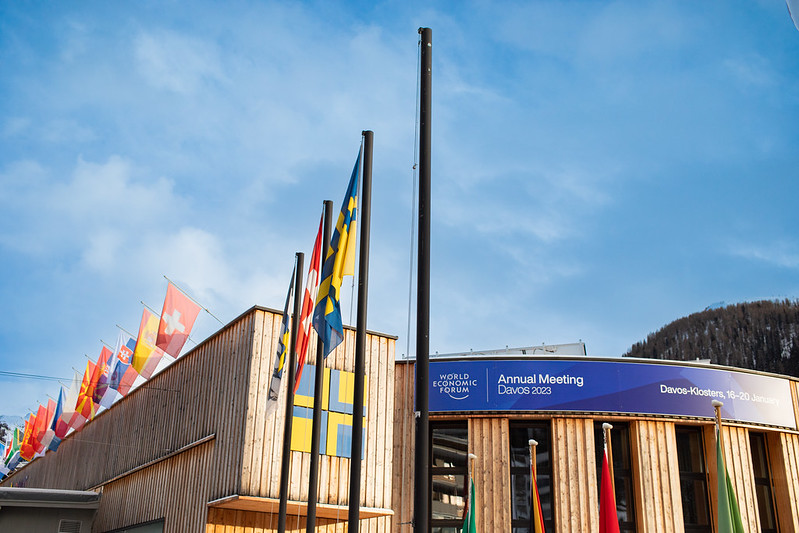Arun Sudhaman 20 Oct 2021 // 6:35AM GMT

The Asia-Pacific PR industry must actively confront "entrenched bias" if it hopes to address the significant pay and promotion gap revealed by PRovoke Media's Best Agencies to Work For study, which polled more than 1,100 employees at 24 PR agencies across the region.
The study found four times as many white men and five times as many white women report annual earnings of US$125k+, compared to their non-white peers of the same gender. More than two in five white men (42%) report earning over $125k per year, despite accounting for just 6% of the overall workforce. One quarter of white women are above the same earning threshold, compared to a much lower proportion for other groups.
The picture becomes even more skewed at higher salary levels, where nearly one in five (18%) white men report earning in the top three income ranges ($200k+). Around one in 20 white women and Southeast Asian men report earning the same, compared to just 1% of non-white women.
"The evidence shows what many of us may have suspected," said MSL Asia-Pacific CEO Margaret Key, one of the few Asian women to hold regional leadership of a multinational PR firm. "We tell our clients how to navigate diversity and inclusion in a dynamic, modern world and it is time for our own industry to walk the talk."
Another female Asian MNC agency leader, Caroline Hsu at the Hoffman Agency, described the data as "jarring" if not entirely unexpected. "We know that agency leadership still skews heavily towards white males, so the findings are not shocking."
"The industry needs to ask itself why this is still not happening," says Hsu. "We know that talent is scarce, but it is hard to believe that there is such a pronounced shortage of talented local and female professionals that the bulk of senior roles still have to be filled by expats."
Hsu believes the reasons are largely cultural, with unconscious bias underpinning an unwillingness to look beyond similar candidates. "Often, leadership in the US and Europe remain more comfortable appointing leaders with similar cultural backgrounds as it is an easier and seemingly less risky option," she said.
"We have to ask whether cultural bias – even unconsciously – plays a role in stifling the opportunities for local employees to move up," adds Hsu. "The point is that the hiring system needs to root out any possible bias. I would also suggest that before appointing an expat leader, we should first look hard at local market candidates. It is about hiring the best person for the job, not necessarily the one who comes most easily to hand."
"The only way to solve this issue is full transparency"
When it comes to addressing the pay gap, it is hard to avoid the comments made by former Hotwire global CEO Barbara Bates, responding to our North American Best Agencies to Work For data earlier this year.
"I’m one of those people who thinks that radical moves need to be made to see change happen," said Bates, who now serves in a senior advisory role at parent group Enero. "In this case, the only way to solve this issue is full transparency by making salaries public. I realize the issues this may cause but only when employers are forced to face their actions publicly will they be held accountable."
While several PR firms have taken tentative steps towards this in the US and UK, major players in Asia appear disinclined to make similar moves. Not a single agency approached by PRovoke Media was able to share pay gap data. Some pointed to parent company policies that only allow data for the global holding group to be shared, rather than individual firms. Others, including Edelman and Weber Shandwick, said the data was not available.
This is unfortunate. Several major PR firms have made notable strides in terms of addressing historic imbalances across local markets, putting considerable effort into hiring Asians into leadership roles. The lack of data, however, makes it difficult to determine progress in terms of tackling unequal pay.
At Ogilvy for example, the firm's local PR operations are largely led by Asian women, but WPP policy prevents it from sharing any DEI data at an agency level. Ogilvy PR Asia-Pacific president Emily Poon, another Asian woman to have made it to the top regional job at a multinational PR firm, notes that "it is critical to conduct regular pay parity reviews to address any gaps that may come up," adding that "Ogilvy PR has made a consistent effort over the years to hire, retain and nurture the best local talent across all levels and offices across Asia-Pacific."
“While the research shows that men remain over-represented within the PR industry in Asia-Pacific, the tide is turning and we are seeing more companies follow through on their commitment to empowering women in leadership," adds BCW Asia-Pacific deputy president Polka Yu. "Currently, 76% of the BCW Asia-Pacific executive team is Asian, and 60% is female. We will continue to mirror the demographics of the markets in which we operate."
Hsu, who has similarly installed local leadership across Hoffman's Asia-Pacific network, believes that pay parity suffers from "the continued perception that local Asian staff should command less than a Western peer."
"I would argue that entrenched bias again plays a role here," continues Hsu. "We need to ensure that people are paid based on their ability, experience and true value — not on their ethnicity."
That may sound simple, but the reality can be more complex. Pay packages are often based on a candidate's prior salary levels, which can perpetuate a cycle of unfair compensation. "Especially when it comes to first-time leadership roles, it can be difficult for an individual to be clear on what they should receive," says Hsu. "It is crucial that they are paid based on their actual value for that current role, not according to a calculation based on previous earnings."
In addition, individual expectations cannot be discounted, either. "The reality is that American and European PR professionals often tend to have higher expectations in terms of compensation than Asian peers, and are better at asking for it," contends Hsu. "Asian professionals have a duty to educate themselves on their market value and demand that they are paid accordingly. The talent shortage means it is a seller’s market, so the odds are ultimately in their favour."
One of the most troubling aspects of the Best Agencies to Work For data is the preponderance of men in higher-paid roles, particularly at a local market level. In Hong Kong, for example, one in 10 men report earnings over $200k, with only one in 20 women reporting the same. In Singapore, a quarter of all men report earning $125,000 or more compared to just 13% of women.
Golin Hong Kong MD Jane Morgan believes that this gap can only be addressed through a rigorous focus on policies that ensure flexible and supportive working environments, particularly as the Covid-19 pandemic takes a heavier toll on working mothers.
"For women, we must facilitate more career paths in and out of the industry, because life changes year-by-year and sometimes the pressure of ‘doing it all’ can be so much that we see women leaving," says Morgan. "Having children, taking care of sick family members, struggling with mental health issues, are all key triggers. Sometimes you need a release of pressure, particularly if you are in a position with a lot of responsibility."
Specific measures Morgan suggests are already being adopted at many firms: extended sabbaticals, market moves, position moves, a year out of industry. "It’s about respecting what your female talent needs and wants throughout their life, to make sure they transition with you."
"Not much has changed over the years"
Ultimately, as Archetype regional director Lee Nugent points out, the industry cannot ignore the imbalances revealed in the PRovoke Media study — "having a proactive plan to ensure we grow a more diverse leadership team over time is a non-negotiable today" — not just because it ensures fairness, but because it makes clear business sense.
"While it’s certainly important that we make the most of international talent to deliver the best work we can for clients (and I’d like to see even more Asian talent heading westwards in the same vein), it’s even more crucial that we demonstrate to our homegrown talent that a career path exists for them to reach the top of our profession, and especially for women who remain under-represented in top roles."
"This means ensuring we monitor progress, that we promote and pay fairly, that we become a more flexible employer, that we are more aware of unconscious bias and the impact it has, and that we use the role models we already have in our leadership teams to inspire the rest of our people," says Nugent.
Of course, the sheer multitude of factors that encompass Asia's fabled diversity means that simple conclusions often warrant further scrutiny. A VP in India will likely get paid less than a similar level in Australia, and pay disparities will also be influenced by specific gender, ethnic and socioeconomic factors that play out on a local level. That Indian VP may not be white, but did he parlay a privileged background into an elite education, making him an easier agency fit compared to someone from an under-represented group?
It is for reasons such as these, perhaps, that Zeno regional president Paul Mottram cautions against "reducing a complex issue to a counting exercise." The industry needs to hold itself to a higher standard, he says, in order to "examine the processes that have become obstacles."
That means, unsurprisingly, wider recruitment policies and effective unconscious bias training to minimise inequity in hiring and promotion. Crucially, though, Mottram adds that "we must measure and track diversity rigorously and often — and then hold ourselves accountable as management."
It is the last part of that equation that agencies appear to find toughest, as PRovoke Media has consistently found in its coverage of the industry's diversity and inclusion issues. There are several ways firms can hold themselves accountable — such as making their data public, and implementing compensation systems that tie incentives to measurable progress. Similarly, PR firms can conduct wage equity audits and publicly disclose their progress towards achieving fair and equitable pay.
If not, it is hard to see how things will change. As one senior Asian agency leader put it to me, on condition of anonymity: "Surprisingly and sadly, not much has changed over the years on the agency side. More needs to be done for parity given the Asian talent pool available. You see the changes on the client side, the demographics have evolved in favour of Asian talent. And with that fair compensation."



































.jpg)






























